Description
Banksy Monkey Queen screenprint
Monkey Queen is a controversial screenprint created in 2003 by arguably the worlds most famous living artist, Banksy. The screenprint was produced in an edition of 750, the first 150 of which were signed.
Monkey Queen was first publicly displayed as a wall painting at a youth club called The Chill Out Zone on Broad Street in Newent, where it remained on the wall of the club for several months before being moved to the front window.
This made headlines, referred to in the news as “Banksygate”, following complaints that the painting was disrespectful to the monarchy and to the national flag. The youth club was asked by the government not to display this image during the Queen’s Golden Jubilee. This raised issues regarding the right to freedom of speech and freedom of expression and the youth leaders at The Chill Out Zone eventually replaced the painting with a more palatable poster of the Union Jack.
Monkey Queen superimposes Banksy’s trademark monkey face stencil over an iconic portrait of Queen Elizabeth II. The black-and-white stencil appears on a background of a red circle, white ring, and blue backdrop (resembling either a halo or a target) in the colors of the British flag.
The Monkey Queen screenprint by Banksy has proved one of the best financial investments of the 21st century. Monkey Queen originally retailed in galleries for around £80, and has subsequently increased in value at a rate of more than 2000% a year on average – demonstrating that an investment in Banksy is probably more fruitful than an investment in property, stocks, shares or supercars!
Monkey Queen is one of the earliest, screenprints in colour created by Banksy. Due to the early date, and edition size, this iconic Banksy screenprint is rarely offered for sale, especially in fine condition.
Monkey Queen is considered one of the most iconic artworks created by Banksy.
Banksy’s biography
Banksy is a pseudonymous England-based street artist, political activist, and film director whose real name and identity remain unconfirmed and the subject of speculation. Active since the 1990s, his satirical street art and subversive epigrams combine dark humour with graffiti executed in a distinctive stenciling technique. His works of political and social commentary have appeared on streets, walls, and bridges throughout the world. Banksy’s work grew out of the Bristol underground scene, which involved collaborations between artists and musicians. Banksy says that he was inspired by 3D, a graffiti artist and founding member of the musical group Massive Attack.
Banksy displays his art on publicly visible surfaces such as walls and self-built physical prop pieces. Banksy’s documentary film Exit Through the Gift Shop (2010) made its debut at the 2010 Sundance Film Festival. In January 2011, he was nominated for the Academy Award for Best Documentary Feature for the film.
Banksy’s name and identity remain unconfirmed and the subject of speculation. In a 2003 interview with Simon Hattenstone of The Guardian, Banksy is described as “white, 28, scruffy casual—jeans, T-shirt, a silver tooth, silver chain and silver earring. He looks like a cross between Jimmy Nail and Mike Skinner of the Streets.” Banksy began as an artist at the age of 14, was expelled from school, and served time in prison for petty crime. According to Hattenstone, “anonymity is vital to him because graffiti is illegal”. Banksy reportedly lived in Easton, Bristol during the late 1990s, before moving to London around 2000.
Banksy started as a freehand graffiti artist in 1990–1994 as one of Bristol’s DryBreadZ Crew (DBZ), with two other artists known as Kato and Tes. He was inspired by local artists and his work was part of the larger Bristol underground scene with Nick Walker, Inkie and 3D. During this time he met Bristol photographer Steve Lazarides, who began selling Banksy’s work, later becoming his agent. By 2000 he had turned to the art of stencilling after realising how much less time it took to complete a work. He claims he changed to stencilling while hiding from the police under a rubbish lorry, when he noticed the stencilled serial number and by employing this technique, he soon became more widely noticed for his art around Bristol and London.
Banksy’s stencils feature striking and humorous images occasionally combined with slogans. The message is usually anti-war, anti-capitalist, or anti-establishment. Subjects often include rats, apes, policemen, soldiers, children, and the elderly.
After Christina Aguilera bought an original of Queen Victoria as a lesbian and two prints for £25,000, on 19 October 2006, a set of Kate Moss paintings sold in Sotheby’s London for £50,400, setting an auction record for Banksy’s work. The six silk-screen prints, featuring the model painted in the style of Andy Warhol’s Marilyn Monroe pictures, sold for five times their estimated price. Their stencil of a green Mona Lisa with real paint dripping from her eyes sold for £57,600 at the same auction. In December, journalist Max Foster coined the phrase, “the Banksy effect”, to illustrate how interest in other street artists was growing on the back of Banksy’s success.
On 21 February 2007, Sotheby’s auction house in London auctioned three works, reaching the highest ever price for a Banksy work at auction: over £102,000 for Bombing Middle England. Two of his other graffiti works, Girl with Balloon and Bomb Hugger, sold for £37,200 and £31,200 respectively, which were well above their estimated prices. The following day’s auction saw a further three Banksy works reach soaring prices: Ballerina with Action Man Parts reached £96,000; Glory sold for £72,000; Untitled (2004) sold for £33,600; all significantly above price estimates. To coincide with the second day of auctions, Banksy updated his website with a new image of an auction house scene showing people bidding on a picture that said, “I Can’t Believe You Morons Actually Buy This Shit.”
On 27 April 2007, a new record high for the sale of Banksy’s work was set with the auction of the work Space Girl and Bird fetching £288,000 (US$576,000) around 20 times the estimate at Bonhams of London. On 21 May 2007 Banksy gained the award for Art’s Greatest living Briton. Banksy, as expected, did not turn up to collect his award and continued with his anonymous status.
In late January 2011, Exit Through the Gift Shop was nominated for a 2010 Oscar for Best Documentary Feature. Banksy released a statement about the nomination, stating, “This is a big surprise… I don’t agree with the concept of award ceremonies, but I’m prepared to make an exception for the ones I’m nominated for. The last time there was a naked man covered in gold paint in my house, it was me.” Leading up to the Oscars, Banksy blanketed Los Angeles with street art. Many people speculated if Banksy would show up at the Oscars in disguise and make a surprise appearance if he won the Oscar. Exit Through the Gift Shop did not win the award, which went to Inside Job.
Banksy was credited with the opening couch gag for the 2010 The Simpsons episode “MoneyBart”, depicting people working in deplorable conditions and using endangered or mythical animals to make both the episodes cel-by-cel and the merchandise connected with the program. His name appears several times throughout the episode’s opening sequence, spray-painted on assorted walls and signs. Fox sanitised parts of the opening “for taste” and to make it less grim. In January 2011, Banksy published the original storyboard on its website. According to Banksy, the storyboard “led to delays, disputes over broadcast standards and a threatened walkout by the animation department.” Executive director Al Jean jokingly said, “This is what you get when you outsource.”
In October 2018, one of Banksy’s works, Balloon Girl, was sold in an auction at Sotheby’s in London for £1.04m. However, shortly after the gavel dropped and it was sold, an alarm sounded inside of the picture frame and the canvas passed through a shredder hidden within the frame, partially shredding the picture. Banksy then posted an image of the shredding on Instagram captioned “Going, going, gone…”. After the sale, the auction house acknowledged that the self-destruction of the work was a prank by the artist. The prank received wide news coverage around the world, with one newspaper stating that it was “quite possibly the biggest prank in art history.” Joey Syer, co-founder of an online platform facilitating art dealer sales, told the Evening Standard: “The auction result will only propel this further and given the media attention this stunt has received, the lucky buyer would see a great return on the £1.02M they paid last night, this is now part of art history in its shredded state and we’d estimate Banksy has added at a minimum 50% to its value, possibly as high as being worth £2m+.” A man seen filming the shredding of the picture during its auction has been suggested to be Banksy. Banksy has since released a video on how the shredder was installed into the frame and the shredding of the picture, explaining that he had surreptitiously fitted the painting with the shredder a few years previously, in case it ever went up for auction. To explain his rationale for destroying his own artwork, Banksy quoted Picasso: “The urge to destroy is also a creative urge”. (Although Banksy cited Picasso, this quote is usually attributed to Mikhail Bakunin.) It is not known how the shredder was activated.] Banksy has released another video indicating that the painting was intended to be shredded completely. The video shows a sample painting completely shredded by the frame and says: “In rehearsals it worked every time…”.
The woman who won the bidding at the auction decided to go through with the purchase. The partially shredded work has been given a new title, Love is in the Bin, and it was authenticated by Banksy’s authentication body Pest Control. Sotheby released a statement that said “Banksy didn’t destroy an artwork in the auction, he created one,” and called it “the first artwork in history to have been created live during an auction.”
In October 2019, Devolved Parliament, a 2009 painting by Banksy showing Members of Parliament depicted as chimpanzees in the House of Commons, sold at Sotheby’s in London for just under £9.9 million. On Instagram, the artist said it was a “record price for a Banksy painting” and “shame I didn’t still own it”. At 13 feet (4.0 m) wide it is Banksy’s biggest known work on canvas. The auction house stated: “Regardless of where you sit in the Brexit debate, there’s no doubt that this work is more pertinent now than it has ever been.”
Banksy dedicated a painting titled Painting for Saints or Game Changer to NHS staff, and donated it to the University Hospital of Southampton during the global coronavirus pandemic in May 2020. The painting was sold for £14.4m (£16.8m including buyer premium) on 23 March 2021, which is a record for an artwork by Banksy. The proceeds from the sale would benefit a number of NHS-related organisations and charities.
Banksy’s works have dealt with various political and social themes, including anti-war, anti-consumerism, anti-fascism, anti-imperialism, anti-authoritarianism, anarchism, nihilism, and existentialism. Additionally, the components of the human condition that his works commonly critique are greed, poverty, hypocrisy, boredom, despair, absurdity, and alienation. Although Banksy’s works usually rely on visual imagery and iconography to put forth their message, Banksy has made several politically related comments in various books. In summarising his list of “people who should be shot”, he listed “Fascist thugs, religious fundamentalists, (and) people who write lists telling you who should be shot.” While facetiously describing his political nature, Banksy declared that “Sometimes I feel so sick at the state of the world, I can’t even finish my second apple pie.”

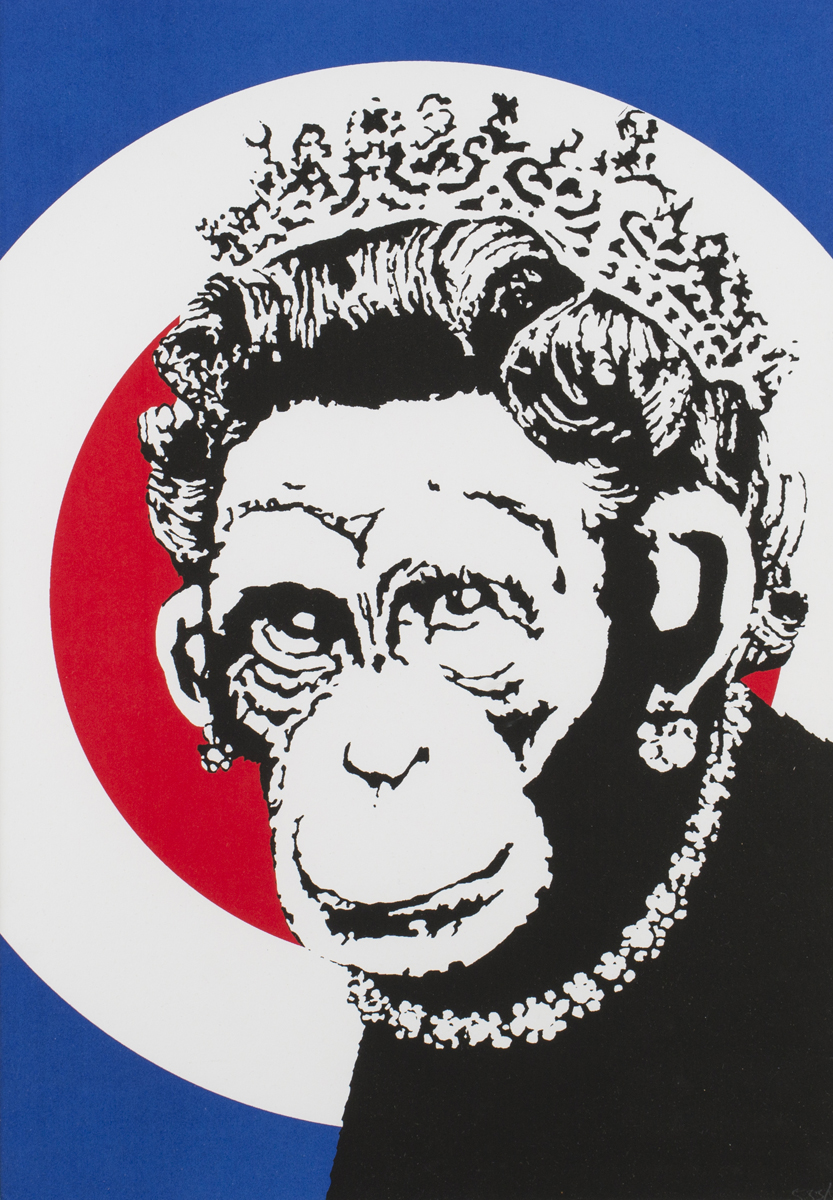
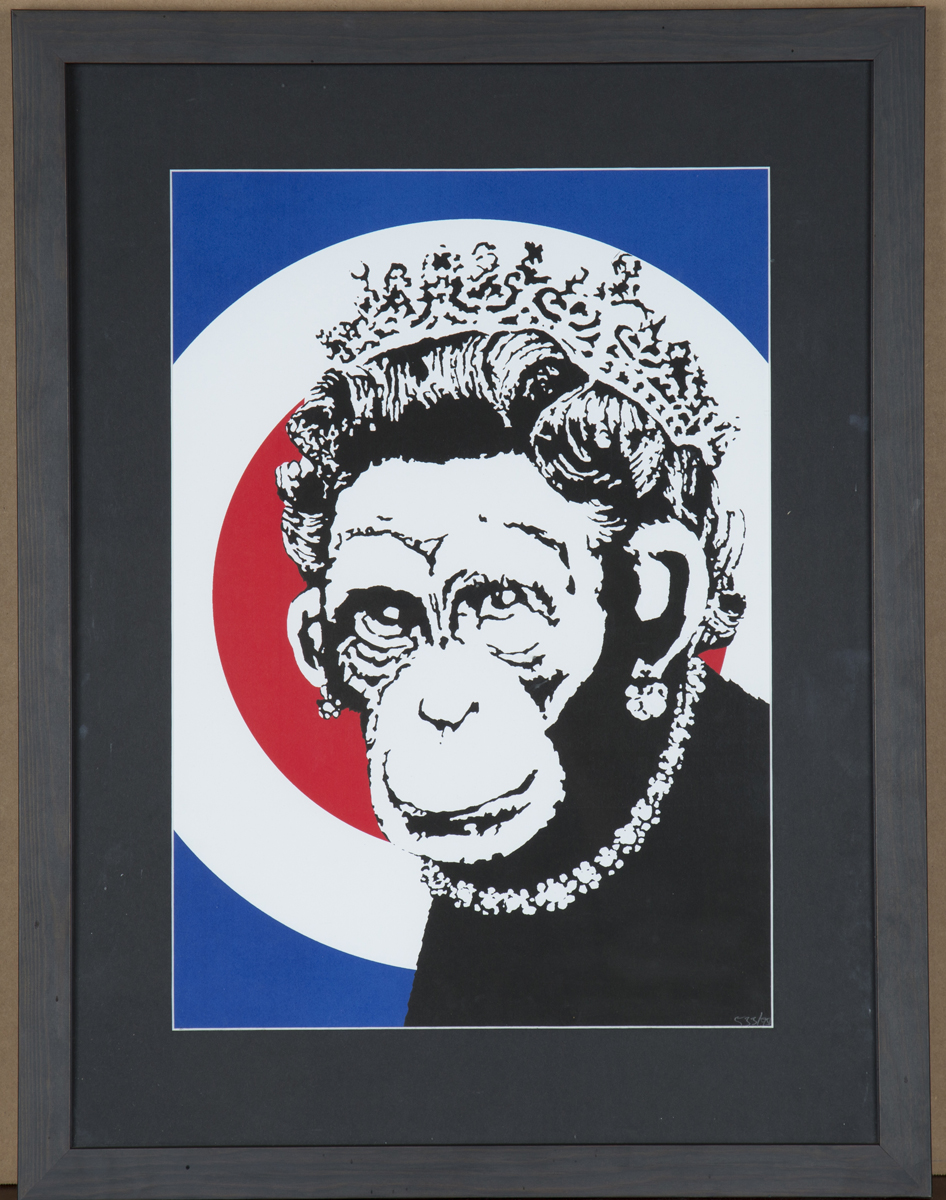
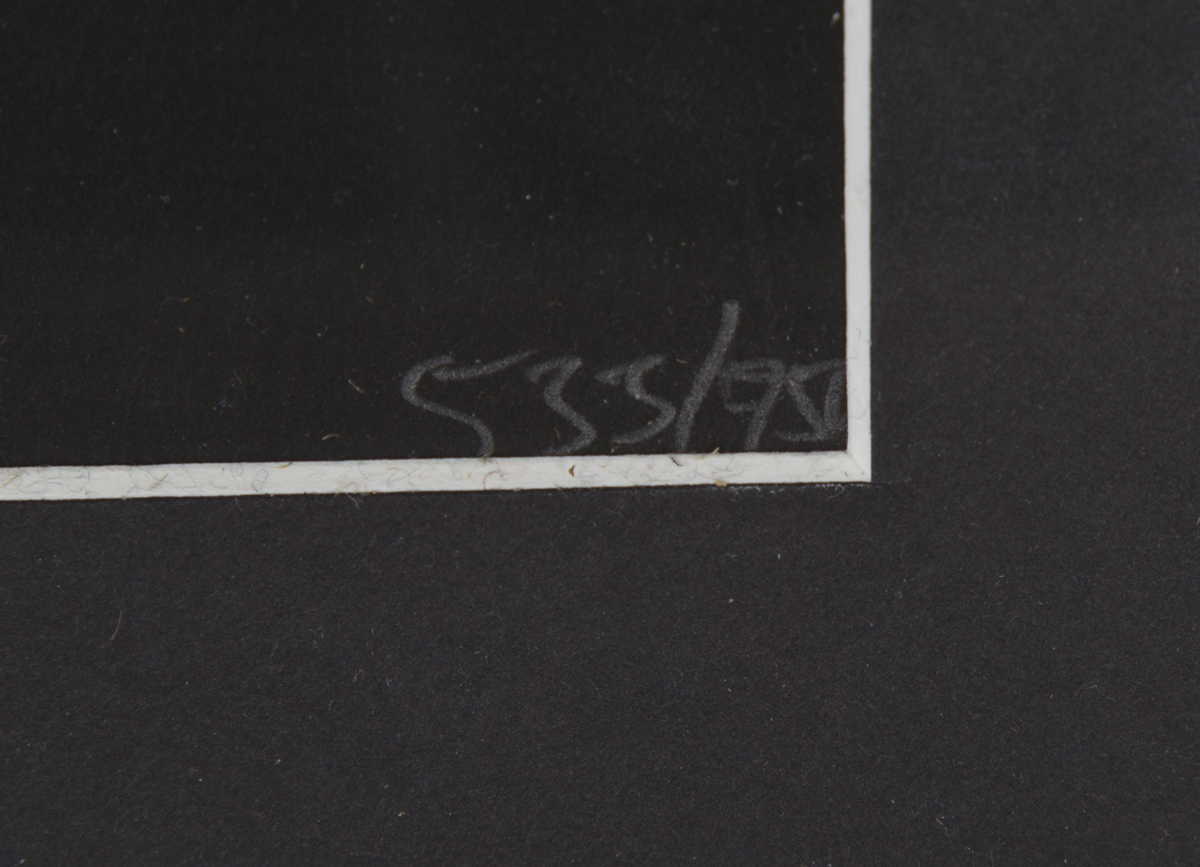
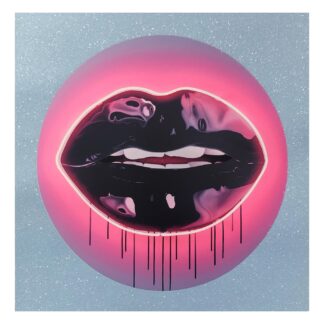
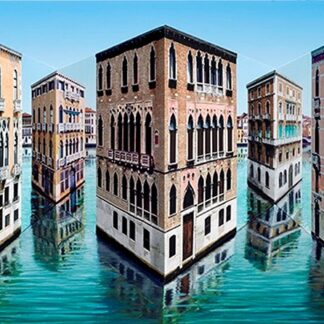
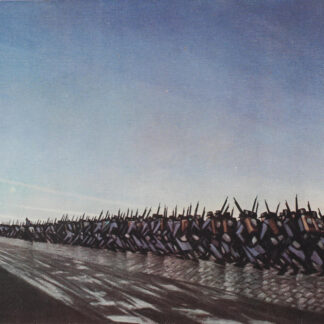
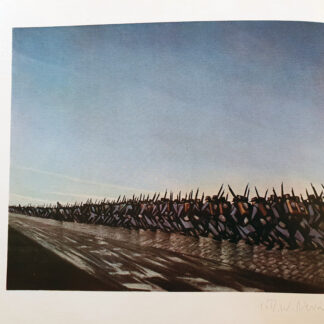
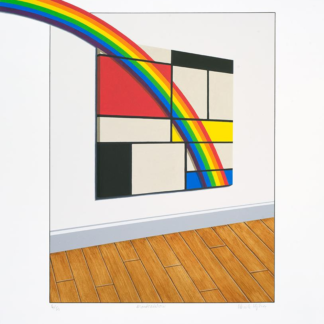
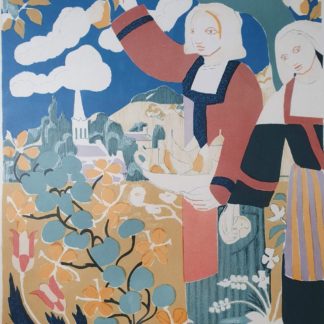

Reviews
There are no reviews yet.